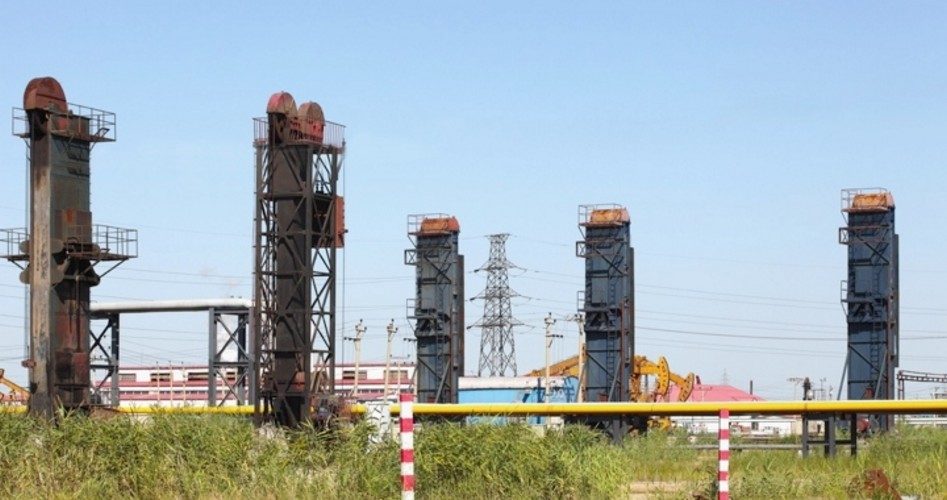
The U.S. oil and natural-gas rush is hacking away at unemployment, manufacturing a total of 1.7 million jobs this year, according to a study released Tuesday by economic forecaster IHS Global Insight. That number will spike to 2.5 million by 2015, and to almost 3.5 million by 2035, creating “high-quality and high-paying” work at wages on average of about $35 an hour — “dramatically higher” than the average $23 an hour for other jobs in the U.S. economy.
Due to the stale U.S. labor market, many Americans who’ve found jobs related to drilling would otherwise be unemployed, asserted John Larson, a vice president at IHS and the study’s chief author. “We look at this in the near term, and we believe that many of these jobs really are net new jobs because these individuals would not be able to find employment elsewhere,” Larson affirmed on a conference call. “These jobs tend to be higher paying.”
The IHS report analyzes so-called “unconventional” oil and gas resources — including shale oil and gas, which is freed by hydraulic fracturing, or “fracking” — and how its growth is impacting the American economy. This capital-intensive industry relies heavily on suppliers in construction and heavy equipment, but it also demands a vast range of material and services such as information technology and legal and financial services. About 80 percent of the jobs will be grounded on rigs or at firms supplying drillers, such as pipe manufacturers, while the rest will be “induced” jobs in other businesses, such as shops, restaurants, and hotels.
Unconventional oil accounts for about two million barrels per day of U.S. production this year, IHS reported, and is projected to spike a staggering 70 percent by 2015, to more than 3.5 million barrels per day; by 2020, production is expected to double to 4.4 million barrels per day.
Job growth among oil firms reflects the costs to permeate shale rock, and by 2035, more than $5.1 trillion will be invested to produce unconventional oil and gas resources. Consequently, federal, state, and local taxes will boost more than $111 billion in 2020 from $62 billion this year. “We’re talking about what we perceive as a game changer in energy production for the United States,” Larson asserted. “It’s a really rapid rise and a dramatic shift.”
IHS also forecasts that these unconventional energy sources will add $237 billion to U.S. GDP this year, and then spiking to $475 billion in 2035. The U.S. economy is growing at a mild 1.3 percent annualized rate, about half of what it was nearly two years ago. “In addition to the jobs directly created by an increase in drilling, there will also be a need for thousands of people to feed all these workers and to provide housing,” notes Fox Business senior editor Charles Brady. “As all of these newly employed folks start spending and consuming, the multiplier effect on economic growth will be significant.”
IHS assumes current regulations on hydraulic fracturing, or “fracking,” and other unconventional oil and natural gas development will remain unchanged. The report comes as the Environmental Protection Agency (EPA) is contemplating how to regulate fracking, which environmentalists claim is a potential environmental and public health hazard.
IHS notes that the unconventional oil and gas industry is currently regulated by the states, because it is operating on private land. However, the EPA’s expansive history of regulation indicates that strictly state-administered regulations on fracking and other unconventional energy-production methods could be short lived, critics suggest.
In a recent article for the Wall Street Journal, Daniel Yergin says the unconventional oil and gas revolution is luring chemical companies back into the U.S., preventing them from outsourcing jobs and operations overseas. “Domestically, growing natural gas supplies provide a foundation for a manufacturing renaissance, at least for industries for which energy is an important feedstock or where energy costs are significant,” Mr. Yergin writes. “Chemical companies have been leaving the U.S. for years in the search for lower-cost countries in which to operate. Now they are planning to invest billions of dollars in new factories in this country because of inexpensive and relatively stable natural gas prices.”
Unconventional oil will outpace traditionally-drilled oil by 2015 and reach close to 4.5 million barrels per day by 2020, accounting for nearly two-thirds of total U.S. crude and condensate production, IHS reported. “At which point do you stop calling this unconventional?” Larson opined. “This is going to become the convention.”
This report illustrates an optimistic outlook for America’s energy future — not to mention the economic growth, increased tax revenue, and the millions of new jobs that arrive with these innovative production methods. A notable question, of course, is the political future of unconventional oil and gas, as IHS compiled its data based on current regulatory conditions.
Government data show “the US is on the fast track to becoming energy independent and an energy-producing superpower,” economist Edward Yardeni suggests. However, “that’s as long as the US government doesn’t get in the way.”
Photo: Oil pumps. Oil industry equipment via Shutterstock



